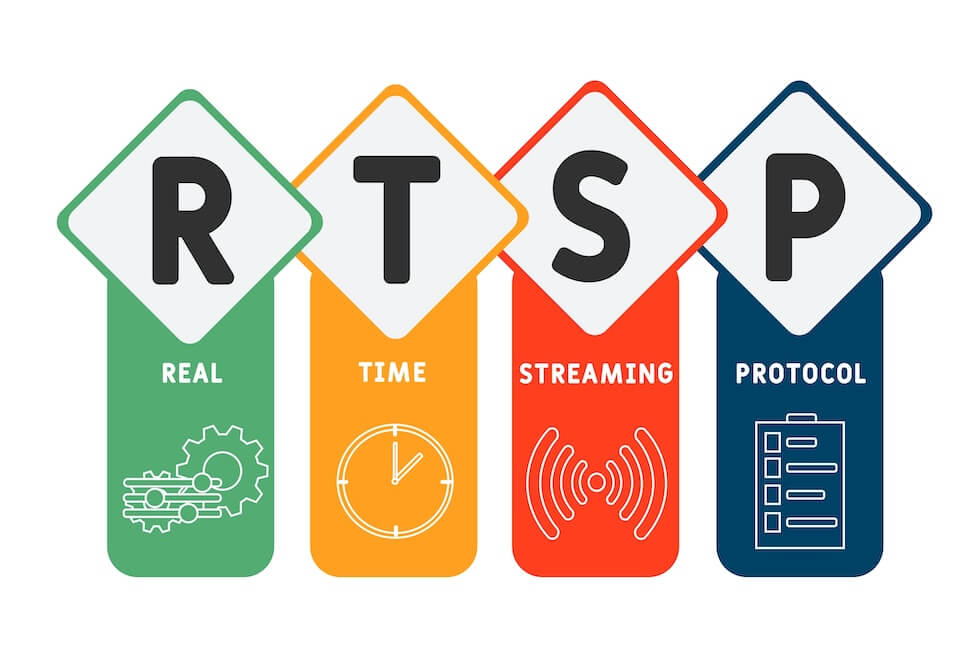Deep Dive on Different Video Streaming Protocols
The world of video streaming is more complex than it seems. Behind every smooth playback and low-latency live broadcast is a carefully chosen streaming protocol. These protocols determine how efficiently video data travels across networks, how quickly it reaches users, and how reliably it performs under real-world conditions. Whether you’re building a live broadcast service, a video-on-demand platform, or a conferencing tool, understanding the protocols involved is crucial to your success.
What Are Video Streaming Protocols?
Before diving into the types and use cases, it’s important to understand what video streaming protocols actually are. A protocol for streaming is a set of rules that govern how video and audio data are transmitted from the source (e.g., a media server) to the viewer’s device. These protocols define how data is broken into packets, how it’s delivered, and how errors or network fluctuations are handled during transmission.
They typically operate across two layers:
- Transport layer, which decides how data is moved (for example, TCP for reliability or UDP for speed). Most modern streaming protocols like HLS and MPEG-DASH operate over HTTP, which itself runs on TCP.
- Application layer, which handles how the media is formatted, segmented, and interpreted by the player.
The protocol you choose impacts everything from latency and quality to scalability and device compatibility.
Types of Video Streaming Protocols
Video streaming protocols aren’t all built for the same job. They can generally be classified based on their intended use and how they handle delivery. Understanding these categories helps in narrowing down the right fit for your platform or product.
Real-Time Protocols
These protocols are designed for near-instantaneous delivery of video content. That makes them ideal for interactive live experiences. They are commonly used in video conferencing, auctions, and low-latency live streams.
HTTP-Based Protocols
These protocols use standard web delivery systems to stream content through regular web servers and CDNs. They are highly scalable, making them ideal for video-on-demand and large live events. They work by breaking content into chunks and allowing adaptive bitrate streaming, where the stream adjusts to the viewer’s bandwidth in real time. While they tend to introduce a few seconds of delay, they excel in reliability and broad device compatibility.
Both categories remain relevant today, and often, streaming platforms combine multiple protocols depending on their needs.
On-Demand Protocols
Used primarily for prerecorded content, these protocols prioritize smooth playback and compatibility across a wide range of devices. They support features like adaptive bitrate streaming and allow users to start playback from any point.
Adaptive Bitrate Streaming (ABR)
ABR is not a protocol itself, but rather a technique used by many modern protocols. It improves the user experience by adjusting video quality dynamically based on available bandwidth, helping reduce buffering and playback interruptions.
Key Protocols Explained

Each major protocol for streaming has specific strengths, limitations, and preferred use cases. Here’s a closer look at the most important ones, what they’re good for, and where they fall short.
RTMP (Real-Time Messaging Protocol)
Originally developed by Adobe for Flash-based video delivery, RTMP was a dominant live protocol for streaming for years. While Flash is now obsolete, RTMP lives on as a reliable method for ingesting live streams into platforms like YouTube, Facebook Live, and Twitch.
RTMP is known for:
- Low latency, often under 5 seconds.
- Compatibility with tools like OBS and Wirecast.
- Limited future because it’s no longer supported for playback in modern browsers.
HLS (HTTP Live Streaming)
Developed by Apple, HLS is now the industry standard for video delivery over the internet. It works by segmenting video into small chunks and delivering them over regular HTTP connections. This makes it compatible with nearly every device and browser.
HLS offers:
- Excellent compatibility, especially on iOS and Safari.
- Support for adaptive bitrate, which improves playback stability.
- High latency by default, often ranging from 15 to 30 seconds. However, with the use of CMAF and LL-HLS, latency can now be reduced to as low as 2 to 5 seconds.
MPEG-DASH
An open-source alternative to HLS, MPEG-DASH provides similar functionality but with more flexibility and codec support. It’s widely used for streaming services and supports advanced encryption and customization.
Key traits include:
- No licensing fees, in contrast to some proprietary formats.
- More codec flexibility, including support for AV1 and HEVC.
- Less native support, particularly on Apple devices.
WebRTC
Designed for real-time peer-to-peer communication, WebRTC is the go-to protocol for video conferencing, telemedicine, and interactive live streaming. It offers extremely low latency but requires a more complex infrastructure. It also depends on a separate signaling layer to establish connections; however, this signaling process is not standardized and must be implemented by the developer.
WebRTC features:
- Sub-second latency, which is ideal for interactivity.
- Peer-to-peer design, which helps reduce server load for small calls.
- Challenging scalability, since it requires SFUs or media servers for large audiences.
SRT (Secure Reliable Transport)
SRT is a newer protocol built to optimize live stream delivery over unreliable networks. It’s commonly used in professional environments for transporting video from a field location to a central studio or server.
SRT is known for:
- UDP-based delivery with retransmission and error correction mechanisms.
- Encryption support, which makes it secure for sensitive streams.
- Growing adoption, especially in broadcasting and remote contribution setups.
RTSP (Real-Time Streaming Protocol)
RTSP is primarily used in IP cameras and surveillance systems. It allows for control over video playback (pause, rewind, etc.) and works well in closed systems, but lacks native support in most modern browsers.
RTSP is used because:
- It enables real-time control over streams.
- It integrates easily with local surveillance setups.
- It’s unsuitable for web playback, so it typically requires conversion to HLS or DASH.
Protocols Recapitulative
| Protocol | Strengths | Limitations | Best Use Cases |
|---|---|---|---|
| RTMP | Low latency (<5s), supported by OBS/Wirecast | No modern browser playback, deprecated | Ingest to YouTube, Twitch, Facebook Live |
| HLS | Universal compatibility, adaptive bitrate | High default latency (15–30s), improved with LL-HLS | General-purpose streaming, iOS/Safari |
| MPEG-DASH | Open-source, codec flexibility (AV1, HEVC) | Poor Apple support, complex setup | VoD, large-scale streaming, customization |
| WebRTC | Sub-second latency, real-time interaction | Hard to scale, needs custom signaling | Interactive live streaming, video calls |
| SRT | Reliable over unstable networks, encryption | Not browser-native, needs decoding | Remote video contribution, broadcasting |
| RTSP | Playback control, easy LAN integration | No browser support, needs conversion | Surveillance, IP cameras |
Comparing Major Protocols in Real World
When choosing a protocol, it’s often helpful to compare them directly:
HLS vs MPEG-DASH
Both rely on HTTP-based delivery and adaptive bitrate streaming, but HLS dominates consumer-facing platforms thanks to Apple’s ecosystem support. MPEG-DASH, as an open standard, provides more codec flexibility and is widely used by platforms aiming for device neutrality. The choice often comes down to whether the primary audience is on Apple devices (favoring HLS) or on a mix of platforms (favoring DASH).
WebRTC vs SRT
Both aim for low-latency delivery but serve different needs. WebRTC thrives in interactive, peer-to-peer situations like video conferencing, where responsiveness matters more than scalability. SRT, by contrast, excels in contribution feeds by delivering high-quality streams from one source to a broadcaster or CDN over unstable networks. For one-to-one or small group calls, WebRTC is the natural choice; for professional live event contribution, SRT stands out.
RTMP vs Modern HTTP Protocols
While RTMP remains a reliable first-mile protocol, it is largely being replaced for final delivery by HLS and DASH. Its low latency once made it indispensable, but without Flash support, it now mainly serves as a bridge between encoders and modern streaming servers.
These comparisons highlight that no protocol is objectively “better.” Each shines in its niche, and modern workflows often combine multiple protocols to cover ingest, processing, and delivery.
How Protocols Handle Adaptive Bitrate Streaming
Adaptive bitrate streaming is a key feature for modern video delivery, helping to maintain a smooth user experience even when internet speeds vary. Instead of delivering one fixed-quality stream, ABR-ready protocols encode and deliver multiple versions of the same video at different quality levels.
During playback:
- The video player monitors network conditions, device performance, and buffer health.
- Based on this information, it switches between available renditions to avoid buffering.
- Transitions are seamless because the stream is broken into small, time-aligned segments.
Protocols like HLS and MPEG-DASH implement ABR natively. This makes them ideal for high-traffic VOD platforms, as they keep the user experience consistent while minimizing CDN waste. For live content, ABR is more complex but still achievable with tools like LL-HLS or with transcoding workflows that prepare multiple live renditions in real-time. CMAF also improves ABR workflows by allowing HLS and DASH to share the same chunk format, simplifying server configuration and reducing storage overhead.
Comparing Protocols: Which One to Use

Selecting the right protocol for streaming depends on what you’re trying to achieve. Each use case comes with its own set of requirements, and latency, compatibility, scalability, and technical complexity all play a role.
If you’re building a video-on-demand platform, HLS is often the safest choice. It offers broad device support and includes adaptive bitrate streaming by default. MPEG-DASH is also a solid choice, especially when you need support for modern codecs or more granular control over encryption and delivery.
For live streaming applications that don’t require sub-second latency, ingesting streams using RTMP or SRT and then repackaging them for delivery using HLS or DASH is a common architecture. This combination allows for relatively low latency at the input stage and maximum compatibility at the playback stage. For latency-sensitive live events that don’t require real-time interactivity, LL-HLS or low-latency DASH provides an efficient balance between performance and compatibility.
If your application is interactive, such as a live quiz game or teleconferencing tool, WebRTC is the only viable option due to its real-time capabilities. That said, WebRTC requires a more advanced setup and is less forgiving in terms of scaling without the right media server support.
RTSP remains relevant for surveillance and internal video feeds. It’s not ideal for public-facing apps, but it works well in controlled environments where browser playback isn’t needed.
Modern Challenges & Trends
Streaming is evolving quickly, and protocol improvements are being driven by both user expectations and technological advances. Today, latency is a major concern. Viewers don’t want to be 30 seconds behind a live event, especially for sports, auctions, or live interactions.
Several developments are worth noting:
- Low-Latency HLS (LL-HLS) and low-latency DASH are helping reduce delay without requiring new client-side support.
- CMAF, which standardizes media segments for HLS and DASH, has made it easier to reduce startup time and improve chunk delivery.
- High-resolution formats such as 4K and 8K are pushing streaming platforms to adopt more efficient codecs like AV1 and to rethink how ABR is implemented.
- Edge computing and distributed architectures are enabling faster delivery by bringing transcoding and storage closer to users.
- SRT is replacing RTMP in many professional workflows because it offers encryption, resilience to packet loss, and better performance over poor networks.
Conclusion
There’s no universal streaming protocol that fits every scenario. Your choice depends on the content type, audience expectations, and your technical setup. HLS and DASH offer great compatibility and flexibility for both live and on-demand content. WebRTC is unmatched for real-time needs. SRT provides a robust, secure path for professional broadcasting. And RTMP, though outdated for playback, still plays a key role in live stream ingestion.
The more you understand the trade-offs and capabilities of each, the better you can design a system that performs under pressure and delivers content seamlessly.
Power Your Streams with HostStage
At HostStage, we provide streaming VPS plans built for reliable, flexible video delivery across HLS, DASH, SRT, RTMP, and WebRTC. A perfect fit for many use cases is our Flux Pro Streaming VPS, which includes dual CPU cores, 4 GB RAM, 100 GB SSD NVMe in RAID 10, and 2 Gbps unmetered bandwidth with bursts up to 25 Gbps. This configuration is ideal for stable streaming and even encoding workflows.
Flux Pro delivers instant setup, easy scaling to higher tiers, and access to global Tier 3 data centers backed by a 99.99 percent uptime SLA. That means you can focus on your stream quality while we take care of bandwidth, uptime, and performance.
Get started with the Flux Pro VPS today. Deploy in minutes and let HostStage power your protocols so you can deliver seamless, scalable video content to your audience.




